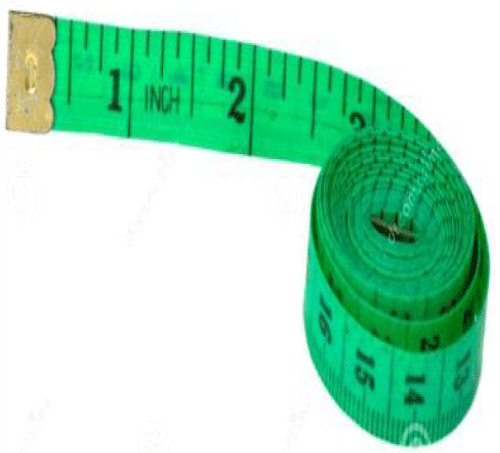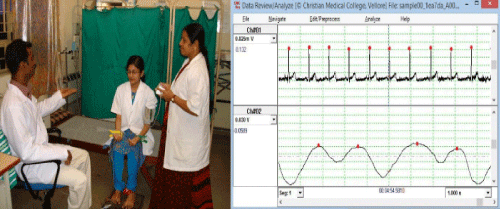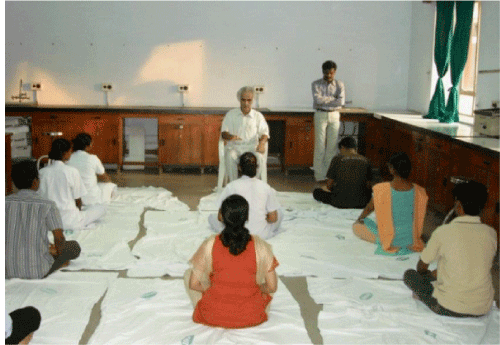Make the best use of Scientific Research and information from our 700+ peer reviewed, Open Access Journals that operates with the help of 50,000+ Editorial Board Members and esteemed reviewers and 1000+ Scientific associations in Medical, Clinical, Pharmaceutical, Engineering, Technology and Management Fields.
Meet Inspiring Speakers and Experts at our 3000+ Global Conferenceseries Events with over 600+ Conferences, 1200+ Symposiums and 1200+ Workshops on Medical, Pharma, Engineering, Science, Technology and Business
Image Open Access
Impact of Screening and Early Life Style Intervention on Pre-Obesity and to Prevent Future Risk of Adiposity Based Chronic Disease (ABCD)
| Rajajeyakumar M1*, Venkatachalapathy K2, Natarajan S2, Dinesh T3, Kalidasan R4, Chellam N5 and Janitha A6 | |
| 1Department of Physiology, Chennai Medical College Hospital & Research Centre, (SRM Group) Irungalur, Trichy 621105, India | |
| 2Department of Yoga, Annamalai University, Annamalai Nagar, Chidambaram, Tamil Nadu 608002, India | |
| 3Department of Physiology, Dhanalakshmi Srinivasan Medical College and Hospital, Perambalur, Tamil Nadu 621113, India | |
| 4Department of Physical Education, Bharathidasan University, Tiruchirappalli 620 024, India | |
| 5Department of Nutrition and Dietetics, Seethalakshmi Ramaswami College, Tiruchirappalli 620002, India | |
| 6Bharat Heavy Electricals Limited (BHEL), Trichy 620014, India | |
| Corresponding Author : | Dr. Rajajeyakumar M MBBS, MD (JIPMER), MSc Yoga,CCEBDM (PHFI), (PhD) Assistant Professor, Department of Physiology Chennai Medical College Hospital & Research Centre (SRM Group) Irungalur, Trichy, Tamil Nadu – 621105, India Tel: 09751382650 E-mail: rajakumar60@gmail.com/td> |
| Received November 26, 2014; Accepted November 28, 2014; Published November 29, 2014 | |
| Citation: R, et al. (2014) Impact of Screening and Early Life Style Intervention on Pre-Obesity and to Prevent Future Risk of Adiposity Based Chronic Disease (ABCD). J Obes Weight Loss Ther 4:239. doi:10.4172/2165-7904.1000239 | |
| Copyright: © 2014 Rajajeyakumar M, et al. This is an open-access article distributed under the terms of the Creative Commons Attribution License, which permits unrestricted use, distributi on, and reproduction in any medium, provided the original author and source are credited. | |
Visit for more related articles at Journal of Obesity & Weight Loss Therapy
| Introduction |
| AACE/ACE [1] defines obesity as a chronic disease characterized by pathophysiological processes that result in increased adipose tissue mass and which can result in increased morbidity and mortality. Environment that interacts with susceptibility genes to promote weight gain referred as obesogenic. The new obesity diagnostic algorithm incorporates two components: (i) an assessment of body mass including validated ethnicity-adjusted anthropometrics to identify individuals with increased adipose tissue at risk; and (ii) the presence and severity of obesity-related complications [1]. If the BMI is <25 kg/m2 (and waist circumference is not increased), these patients have normal weight and are candidates more prone for preobesity. The old diagnosis primarily relied on the anthropomorphic measure of BMI, with uncertainties regarding how an increase in BMI affects individual health [2]. In certain ethnic groups (e.g., South Asians), individuals with BMI 23-25 kg/m2 can still be diagnosed as obese on the basis of increased waist circumference using population and ethnicity specific threshold values as delineated by the International Diabetes Federation [3]. |
|
|
| Materials and Methods |
| Role of Waist Circumference (WC) measurement |
| WC was used as an essential criterion for the anthropometric component in all patients or in subgroups of patients, for risks of cardio metabolic conditions (e.g., prediabetic states, cardiovascular disease risk) (Table 1). Measurement of waist circumference is by using inch tape (Figure 1). |
| Recording of mean blood pressure and heart rate |
| Recording of mean blood pressure and heart rate by using NIBP (Non-Invasive Blood pressure Monitor); and ECG recording for calculation of RR Interval (Heart rate) (Figure 2). |
| Recording of short term 5 minute HRV (Heart Rate Variability) |
| Sympatho-vagal balance = LF/HF Ratio or Mean RR interval (Figure 3). |
| Prevention of Pre-obesity |
| Reaching and maintaining a healthy weight is important for overall health and prevention of lifestyle diseases like diabetes, obesity etc. |
| 1. Diet: Healthy meal pattern and reduced calorie meal plan |
| 2. Be Physically Active: Physical activity need for weight control, many can maintain their weight by doing 150 to 300 minutes (2½ to 5 hours) a week of moderate-intensity activity such as brisk walking. |
| 3. Reducing psychological distress and obesity through Yoga Practice (Figure 4). |
| Conclusion |
| A recent study evaluating the effects of yoga on anxiety and depression associated with obesity and its related symptoms. The effects of yoga in reduction of inflammation and stress can be explained by the concept of psychoneuroimmunology, which is a relatively new field of science that investigates multidirectional interactions between behavior and immune system, mediated through nervous system [4]. |
References
- AACE/ACE (2014) Consensus conference on obesity: Building an evidence base for comprehensive action Endocr Pract 20: 957.
- [No authors listed] (2000) Obesity: preventing and managing the global epidemic. Report of a WHO consultation. World Health Organ Tech Rep Ser 894: i-xii, 1-253.
- Alberti KGMM, Eckel RH, Grundy SM, Zimmet PZ, Cleeman JI, et al. (2009) Harmonizing the metabolic syndrome: a joint interim statement of the International Diabetes Federation Task Force on Epidemiology and Prevention; National Heart, Lung, and Blood Institute; American Heart Association; World Heart Federation; International Atherosclerosis Society; and International Association for the Study of Obesity. Circulation 120: 1640-1645.
- Sarvottam K, Yadav RK (2014) Obesity-related inflammation & cardiovascular disease: efficacy of a yoga-based lifestyle intervention. Indian J Med Res 139: 822-834.
Tables and Figures at a glance
| Table 1 |
Figures at a glance
 |
 |
 |
 |
| Figure 1 | Figure 2 | Figure 3 | Figure 4 |
Post your comment
Relevant Topics
- Android Obesity
- Anti Obesity Medication
- Bariatric Surgery
- Best Ways to Lose Weight
- Body Mass Index (BMI)
- Child Obesity Statistics
- Comorbidities of Obesity
- Diabetes and Obesity
- Diabetic Diet
- Diet
- Etiology of Obesity
- Exogenous Obesity
- Fat Burning Foods
- Gastric By-pass Surgery
- Genetics of Obesity
- Global Obesity Statistics
- Gynoid Obesity
- Junk Food and Childhood Obesity
- Obesity
- Obesity and Cancer
- Obesity and Nutrition
- Obesity and Sleep Apnea
- Obesity Complications
- Obesity in Pregnancy
- Obesity in United States
- Visceral Obesity
- Weight Loss
- Weight Loss Clinics
- Weight Loss Supplements
- Weight Management Programs
Recommended Journals
Article Tools
Article Usage
- Total views: 13924
- [From(publication date):
December-2014 - Aug 19, 2025] - Breakdown by view type
- HTML page views : 9268
- PDF downloads : 4656
